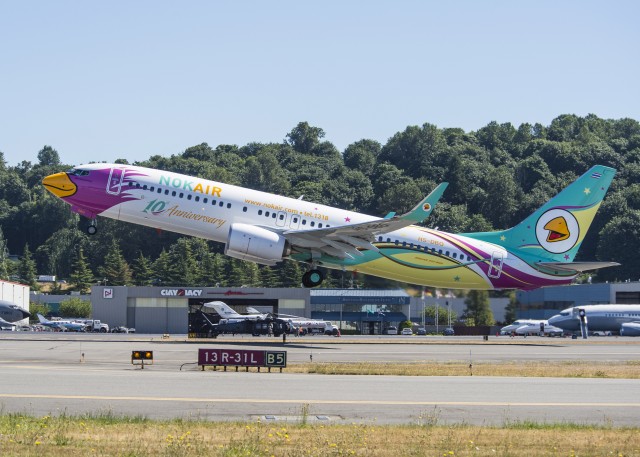
Nok Air’s brand new 737-800 takes off from Boeing Field in Seattle – Photo: Boeing
Nok Air already has a pretty sweet and unique looking livery. Now they have another special livery in the fleet to celebrate the airline’s 10th anniversary.
The Boeing 737-800 has the typical bird nose, but special stars, streamers and the 10th anniversary have been added.
“Today is an extremely exciting day for all of us at Nok Air, as the ’10th Anniversary’ aircraft and livery is a symbol of all the hard work and commitment of everyone at Nok Air in the past 10 years to achieve our goal of becoming Thailand’s number one premium low cost carrier,” said Nok Air CEO Patee Sarasin. “We are proud to have worked with Boeing since we started operations and this aircraft also marks a special milestone for our partnership.”
Make sure to notice the small beak on the winglet — now that is classy.
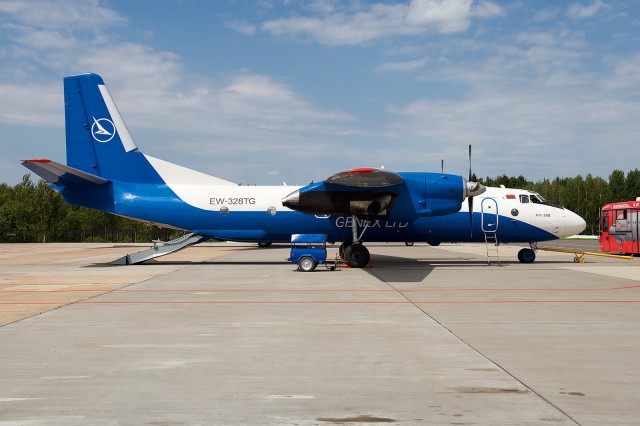
EW-328TG, an AN-26B side-on. Photo – Bernie Leighton | AirlineReporter
Antonov’s AN-26 is not a passenger plane, not even close. The AN-26 stems from the passenger AN-24– except it’s an AN-24 with a retractable cargo door. Same Ivchenko-Progress AI-24VT engines, same Kuznetzov APU. Just a door and some bubble windows in the flight deck separate it from its more, passenger-appropriate, forerunner.
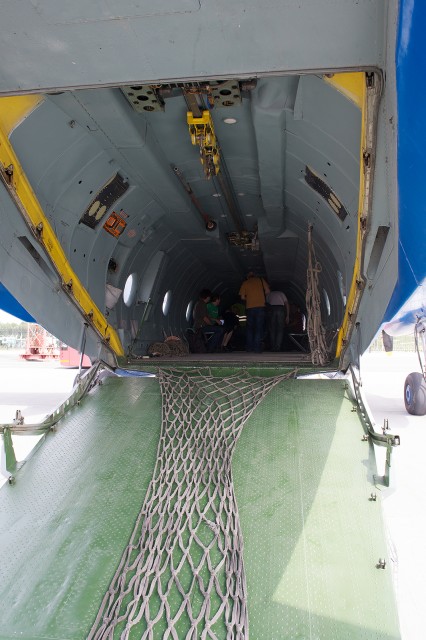
Boarding an AN-26B. Photo – Bernie Leighton | AirlineReporter
The cargo ramp is actually relatively slippery, so one must pay close attention and walk up the net. That photo also illustrates the fact that the AN-26 is equipped with an overhead crane to make loading easier.
The seats are hard — hard and linear. There are four windows in reasonable shape, but they barely make the cabin lighter than a dim alley, but it’s the thought that counts. All this didn’t take away from the fact that I had the opportunity to fly in this Ukrainian-built aircraft.
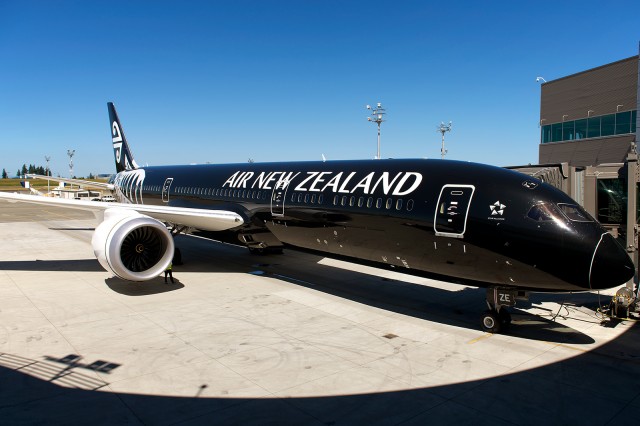
ZK-NZE, Air New Zealand’s first 787 at the Everett Delivery Center. It took 92.5 gallons of paint to create this special livery. Photo – Bernie Leighton | AirlineReporter
This morning I was able to take part in a Boeing media event involving a much heralded aircraft: Air New Zealand’s first 787-9. We’ve discussed what the cabin will look like before on the site, but it’s a lot different to see- and feel- it in person.
The tour commenced by taking a look around the airframe outside, but with the caveat that we had to stay within the gate lines of the delivery stall. This meant that I had to get creative with my angles. We could, however, also make use of the balcony of the Everett Delivery Center, which provided some great views.
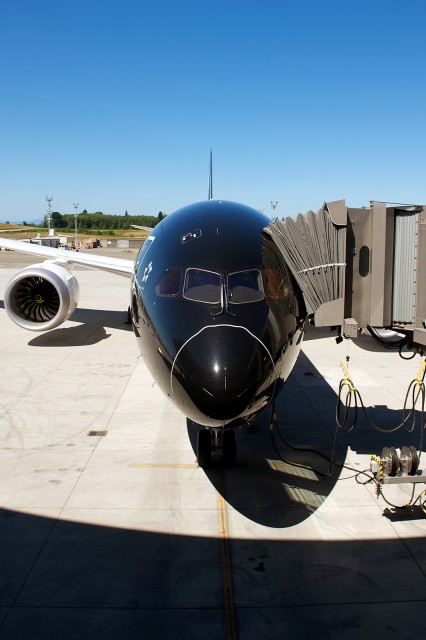
Windscreen-level with a 787-9. Photo – Bernie Leighton |AirlineReporter
The outside of this plane is amazing, but I was mostly there to check out what was on in the inside. After getting external shots, it was time to head onboard Air New Zealand’s brand new aircraft. A special moment for me as I’ve never even set foot inside a 787 Dreamliner of any flavor before.
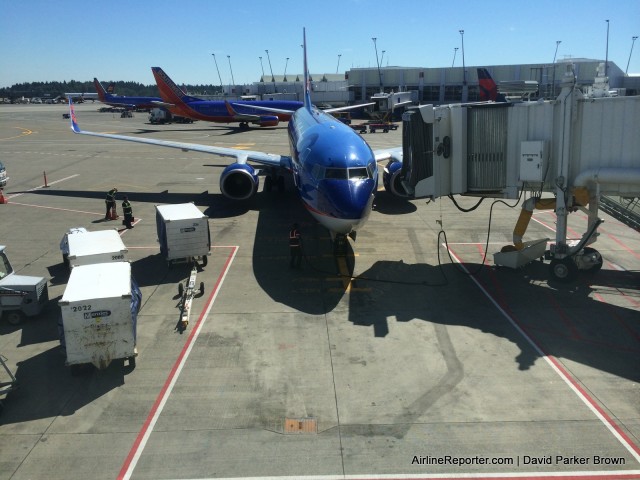
A Sun Country Boeing 737-800 at SEA
If I had to sum up my recent Sun Country Air flight experience with one word, it would be: “kids.”
It is not the airline’s fault that I was surrounded by kids on my over three hour flight from Seattle (SEA) to Minnesota (MSP), but it did make my experience a little less enjoyable.
Now, I am not one of those who complains every time a kid is next to me. I know I was there once and I know that parents are just trying to get somewhere with their family. But when I have a gaggle of kids surrounding me and not behaving, I can’t help but take notice. Luckily the airline came through and over all I would still say I had a good flight experience.
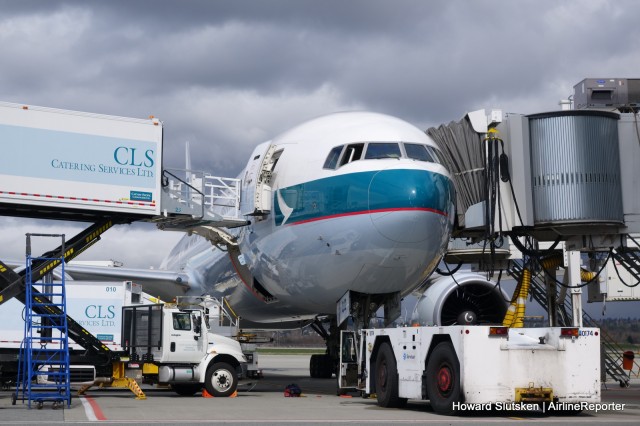
A Cathay Pacific Boeing 777-300 in the midst of a turnaround at YVR. You can see the yellow air conditioning hoses under the bridge.
Your flight has landed, and the plane is pulling up to the gate. You’re ready to spring into action as soon as you hear the “we’re stopped” chime. But instead of jumping up and waiting in the aisle, why don’t you relax in your window seat, and look outside? You do have a window seat, don’t you? There’s quite the dance of people and equipment happening, all to service the plane and get it ready for its next flight.
The turnaround actually begins long before the plane lands. Equipment is pre-positioned at the gate, supplies and catering are prepared, and ramp and terminal staff get ready for the arrival. As the flight turns onto the taxiway after landing, the crew gets their gate assignment from ground control, or in the case of a major airport, ramp control. The plane’s Auxiliary Power Unit (APU) will have been started to provide an electrical and pneumatic supply after the engines are shut down. The APU is a small jet engine, generally located in the tail cone. One of the first airliners with an APU was the tri-jet Boeing 727, and its APU was located in the wing root.






